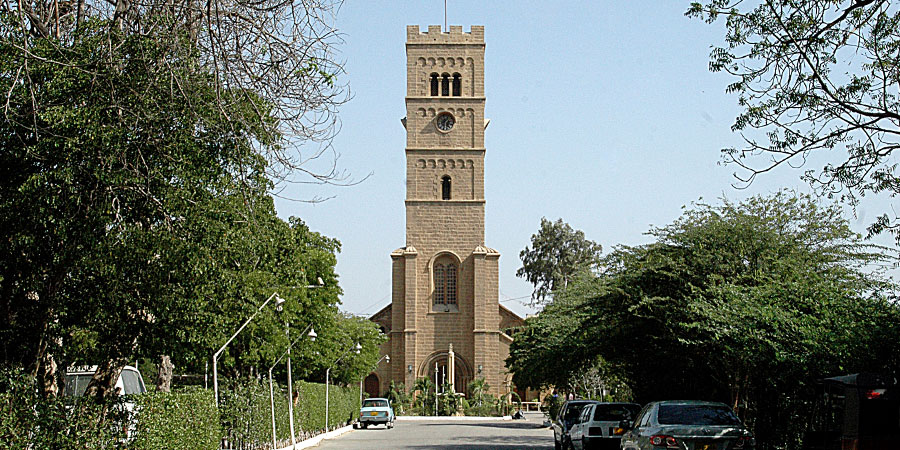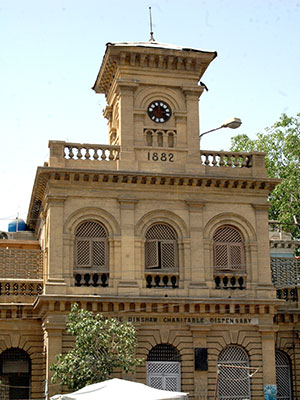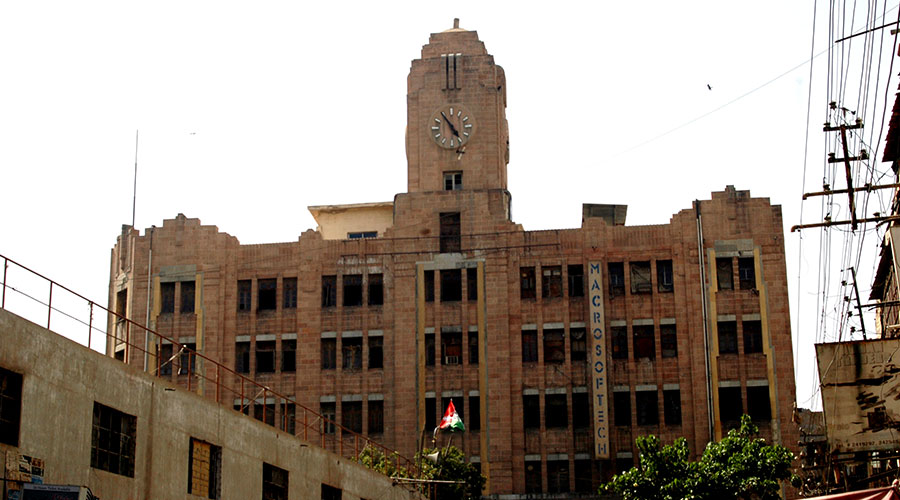DUNKI: THE PERILOUS PATH TO EUROPE
- 30 Mar - 05 Apr, 2024

A need that rests on the wrists now, was once a luxury. Until the 20th century wrist watches were rare. To go about the daily chores, people needed to know time. To keep the people informed, clock towers were constructed that now speak avenues of a nation’s culture, heritage and style of architecture. Initially the towers did not have faces, but striking bells. From one of the first clock towers, the Tower of the Winds in Athens, that estimated time based on the position of the sun, to about a dozen time tellers in the economic hub of Pakistan, MAG brings to you a series of clock towers that speak a timeless tale.
When driving around Fatima Jinnah Road, near Zainab Market, a clock tower is what one can see from afar. The Romanesque structure shouts out loud its tales of yore. It was in between 1852 and 1855 when the Holy Trinity Cathedral was built, designed by Captain John Hill of the Bombay Engineers. One of the first major churches in Karachi, the Trinity Church’s square tower was to serve as a lighthouse initially with beacons fixed inside the tower. While in the vicinity of this time teller, the cliché ‘simple is more’ stands out. Built in the pre-Renaissance Florentine style, the foundation stone of the structure was laid by Sir Bartle Frere. Initially the height of the tower was 250 feet but in 1904 two of its top storeys were removed due to a weak foundation making it now stand at a height of 110 feet. As the stonemasonry of the structure envelops all those who visit, the buff-coloured Gizri stone that wraps the garrison structure in its foothold sprinkles out history to all those who pay a visit.

Preedy Street and Raja Ghazanfar Ali Road (formerly known as Somerset Street) are home to a one-of-its-kind landmark. Inaugurated in 1882 as can be seen on the façade, the Edulji Dinshaw Charitable Dispensary has a central clock with a metallic roof. It was the first building constructed in Italianate style. Designed by James Strachan, it is named after the notable Parsi, Dinshaw who provided funds for its construction. The dispensary is knocked together with Gizri stone with a trademark style of its architectural style – semi-circular pilaster and arcaded frontage. This very dispensary towards the end of the 19th century was catering to 100 patients every day.
Fresh produce is what you seek? The buzzing town of Lea Market has a landmark that can easily guide the seekers around the wholesale trading space which has been serving its residents since 1927. Stretched out in a trapezoid, the market has been named after British engineer, Measham Lea. With encroachments oozing from all fours, the Lyari clock tower is one which is the landmark that is used by hundreds every day to explain local addresses to the newcomers. Built in the 1940s, the structure is made in plain cement which is at the criss-crossing of Napier Road, Sheedi Village Road, Siddiq Wahab Road and River Street. Unfortunately, the clock tower is not used for the sole purpose it was built for; using it as a storage by shopkeepers, the clock’s frosty hands are proof enough of how we let out history fly past us by our irresponsible attitude.
Reeking of fish odour, swamped with the dampness of the gangplanks, stands the Sydenham Passenger Pavilion which was inaugurated on January 20, 1913 by Lord Sydenham, the Governor of Bombay. The clock tower has stood tall informing the British and keeping them punctual when World War I began, when the port saw more crowds. It was then that the area of the port had expanded, which included a new boat basin, which was five hectares across, ringed on three sides by the Return Wharf, the Sydenham Pier and the Railway Wharf.

It was the skyscraper of Karachi in the early 20th century. Standing at a corner of Bunder Road, this five-storey structure was the tallest edifice before partition, with an iron elevator, which was out of the ordinary for that time, and a clock tower which is a constant reminder to the passers-by of the age when art was valued. Usman Damohi, a historian whose book, Karachi in the Mirror of History, gives out details of the building which hails similarities to the structures of New York and Chicago of that era, rather than the usual colonial structures of that time. Located in the commercial hub of the city, it was commissioned by the Lakshmi Insurance Company, and the architects of the building were Maysers D H Daruwala & Co.
COMMENTS